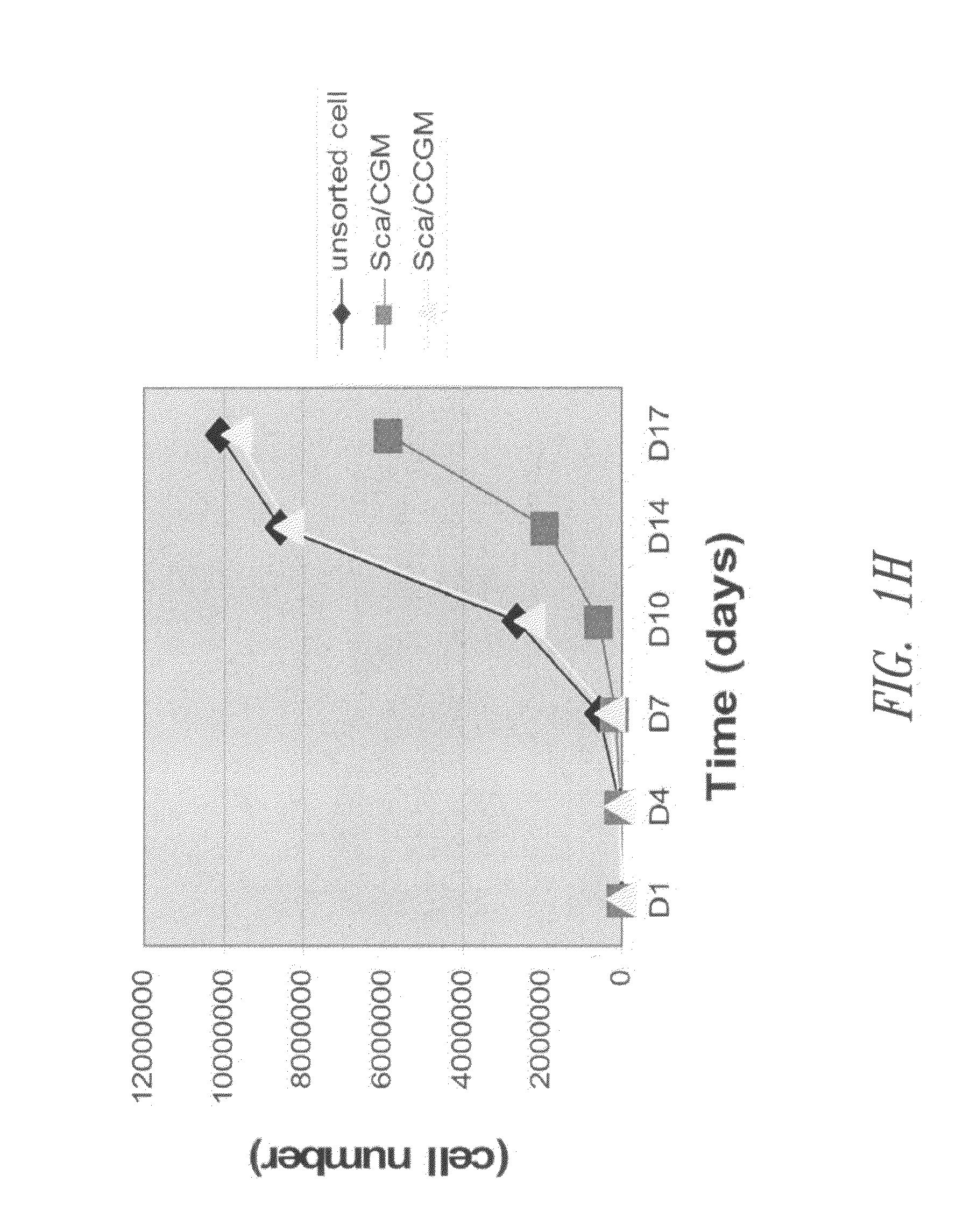Enriched stem cell and progenitor cell populations, and methods of producing and using such populations
a technology of which is applied in the field of high-purification populations of multipotent mammalian stem cells and progenitor cells, can solve the problems of fibroblasts limiting the therapeutic use of cscs prepared from explants, and methods that are difficult to reprodu
- Summary
- Abstract
- Description
- Claims
- Application Information
AI Technical Summary
Benefits of technology
Problems solved by technology
Method used
Image
Examples
example 1
Isolation and Characterization of Cardiac Stem Cell and Progenitor Cell Populations
[0106]Populations of Sca-1+ cardiac stem cells were isolated and expanded using a two-stage method involving purification of CSCs from a primary tissue explant and cell enrichment. Mouse heart tissue was cultured as previously described10 with minor modification. Heart tissues were obtained from male mice (2 month old) with approval of the Institutional Animal Care and Use Committee of University of South Florida. Tissues were minced into small pieces and subjected to enzymatic dissociation with a mixture of 0.2% trypsin and 0.1% collagenase IV (Worthington Biochemical Corp.) in PBS three times for 5 minutes at 37° C. After treatment, the remaining tissue fragments were cultured as explants in explant medium (Iscove's Modified Dulbecco's IMDM with 10% fetal calf serum (FBS), 100 U / mL penicillin G, 100 ug / ml streptomycin, 2 mmol / L L-glutamine, and 0.1 mmoL / L 2-mercaptoethanol) at 37° C. and 5% CO2.
[010...
example 2
In Vitro Differentiation of Cardiac Stem Cell and Progenitor Cell Populations
[0115]To analyze the spontaneous differentiation of Sca-1+ cell-formed spheres, cardiac Sca-1+ cells isolated as described in Example 1 were exposed to low-serum medium (2% FBS) for 2 days, and assayed for the expression of the cardiomyocyte structure proteins, myosin and connexin43, by immunofluorescent staining. As shown in FIG. 4A-D, confocal immunofluorescence analysis of a cardiosphere using anti-connexin43 (green) and anti-myosin (red) antibodies revealed spontaneous differentiation present in the peripheral zone of sphere (FIG. 4A arrow). These results suggest that, in an in vitro low serum environment, Sca-1+ cell-formed spheres are capable of differentiating into cardiomyocytes.
example 3
In Vivo Differentiation of Cardiac Stem Cell and Progenitor Cell Populations
[0116]The ability of Sca-1+ cells to differentiate and reconstitute the myocardium in vivo was examined in mice treated with LacZ-labeled Sca-1+ cells. To track the cells after transplantation in the heart, Sca-1+ cells were genetically engineered to express the LacZ reporter gene. Sca-1+ cells were transduced with the retroviral reporter vector packaged from pCL-MFG-LacZ plasmid (Imgenex). Retronectin dishes (Takara Bio Inc.) were used to increase the transduction ratio of retrovirus. The transduction efficiency was evaluated by LacZ detection kit for cells (InvivoGen). Transduction was measured at greater than 90% efficiency by β-gal staining (FIG. 5A).
[0117]Male C57 / BL6 mice (4 month old) were anesthetized with sodium pentobarbital (40 mg / kg, i.p.) and mechanically ventilated. Myocardial infarction was induced via ligation of the left anterior descending coronary artery 2 mm from the tip of the normally p...
PUM
 Login to View More
Login to View More Abstract
Description
Claims
Application Information
 Login to View More
Login to View More - R&D
- Intellectual Property
- Life Sciences
- Materials
- Tech Scout
- Unparalleled Data Quality
- Higher Quality Content
- 60% Fewer Hallucinations
Browse by: Latest US Patents, China's latest patents, Technical Efficacy Thesaurus, Application Domain, Technology Topic, Popular Technical Reports.
© 2025 PatSnap. All rights reserved.Legal|Privacy policy|Modern Slavery Act Transparency Statement|Sitemap|About US| Contact US: help@patsnap.com



